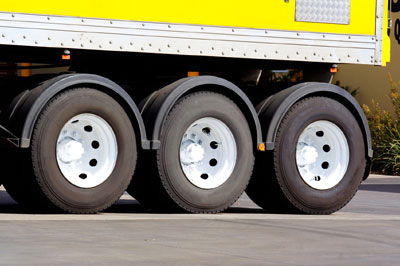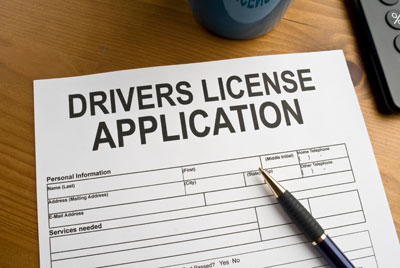Regulations for Truck Safety
There are federal regulations in place for truck safety, but they can’t prevent tragic accidents. If a truck crash happens to you or a family member, the experienced Florida truck accident law firm of Searcy Denney Scarola Barnhart & Shipley can help you sort out the laws and understand your rights.
Legislation related to the trucking industry is implemented and enforced by three major agencies of the U.S. Department of Transportation:
The National Highway Traffic Safety Administration (NHTSA) was established by the Highway Safety Act of 1970, as the successor to the National Highway Safety Bureau, to carry out safety programs under the National Traffic and Motor Vehicle Safety Act of 1966 and the Highway Safety Act of 1966.

- NHTSA is responsible for reducing deaths, injuries and economic losses resulting from all kinds of motor vehicle crashes, including car-truck accidents. This is accomplished by setting and enforcing safety performance standards for motor vehicles and motor vehicle equipment, and through grants to state and local governments to enable them to conduct effective local highway safety programs.
- NHTSA investigates safety defects in motor vehicles; sets and enforces fuel economy standards; helps states and local communities reduce the threat of drunk drivers; promotes the use of safety belts, child safety seats and air bags; investigates odometer fraud; establishes and enforces vehicle anti-theft regulations; and provides consumer information on motor vehicle safety topics.
- NHTSA also conducts research on driver behavior and traffic safety in order to develop the most efficient and effective means of bringing about safety improvements
The Federal Motor Carrier Safety Administration (FMCSA) is focused on reducing crashes, injuries, and fatalities involving large trucks and buses specifically. In carrying out its safety mandate, the FMCSA:
- Develops and enforces data-driven regulations for motor carriers (truck and bus companies) that balance safety with industry efficiency.
- Harnesses safety information systems to focus on higher-risk carriers in enforcing safety regulations.
- Targets educational messages to carriers, commercial drivers, and the public.
- Partners with stakeholders that include federal, state, and local enforcement agencies, the motor carrier industry, safety groups, and organized labor on efforts to reduce bus and truck-related crashes.

The Federal Highway Administration (FHWA), also an agency of the USDOT, implements and enforces the rules regarding length, width and weight of commercial motor vehicles allowed on the country’s national highway system. However, each state has additional rules for commercial trucks, and has the option to issue permits for oversize and overweight vehicles.
Rules and Standards You Should Know About
Truck Specifications
Federal legislation about the size and weight of big trucks attracts media attention and outspoken advocates both for and against allowing bigger, heavier trucks on the road. Here are some of the federal rules, as of 2015, that govern the size of commercial trucks. Federal requirements governing truck length apply only to the national network of interstate systems and designated highways.
Width: 8.53 feet (102 inches)
Length: Straight (self-propelled) trucks, length is determined by states
Semi-trailers, 48 feet (some states have “grandfathered” higher limits)
Truck tractor-semitrailer-trailer combination, 65 feet
Height: No restriction on height
Weight: Single axle, 20,000 pounds
Tandem axle, 34,000 pounds
Gross vehicle weight, 80,000 pounds
Trucking Companies

Much of the responsibility for trucking safety falls on trucking companies that operate huge fleets and sometimes focus more on on-time delivery than on safety. Generally, trucking companies are required to:
- Adhere to provisions of the Commercial Driver’s License Act, which requires states to adopt testing and licensing standards to keep unqualified, unsafe truck drivers off the highways.
- Maintain driver files that contain an employment application that lists 10 years of work experience; reference checks; copy of the appropriate driver’s license; copy of the most recent motor vehicle record (including tickets and accidents); a medical certificate based on a physical conducted every two years; results of a road test signed by the test evaluator; a record of drug-testing, if required by federal or state regulation; and documentation that management has reviewed the file at least one a year.
- Review driver logs for violations and corrective action taken, if any; maintain driver logs for at least six months.
- Comply with federal vehicle inspection, repair and maintenance regulations, which call for systematic inspection of all vehicles under the company’s control. Federal law requires that parts and accessories be in safe and proper operating condition at all times, including parts specified in the code and any additional parts that affect safety of operation, such as frame and frame assemblies, suspension systems, axles and attaching parts, wheels and rims, and steering systems.
- Maintain records for each vehicle under the company’s control for 30 consecutive days. Records must include identification of the vehicle (make, serial number, year, and tire size), nature and deadline for inspections and maintenance to be performed, and the results of such inspection, maintenance and repair.
- Comply with safety standards governing systems such as speed-limiting devices, electronic onboard recorders, retroflective sheeting and effective underride guides.
Truck Drivers

The first obligation of a commercial vehicle driver is to apply for and obtain a commercial driver’s license (CDL), which is issued by states in compliance with federal law. CDLs are issued in three classifications linked to the weight of the vehicle to be driven. Additional testing is required for drivers of double/triple trailers, tank vehicles, and transport of hazardous materials.
The Commercial Motor Vehicle Safety Act of 1986 makes it illegal for CDL holders to have more than one license, and requires states to adopt testing and licensing standards to assess applicants’ ability to operate the type of vehicle for which they are licensed.
Another major driver responsibility is to adhere to federal hours-of-service (HOS) guidelines, which specify when and how long a driver may drive. Here are the basics of truck driver hours-of-service rules. For more detailed information, click here to access the FMCSA’s Interstate Truck Driver’s Guide to Hours of Service.
14 Hour Driving Window
Even though it is not based on a 24-hour day, this is known as the “daily limit” because it permits a 14-consecutive-hour window in which 11 hours may be driven after 10 or more consecutive hours off. Once a driver reaches the end of this window, he or she cannot drive again until being off-duty for 10 consecutive hours. However, driving is not permitted if more than 8 hours have elapsed since the driver’s last off-duty or sleeper-berth period of at least 30 minutes.
30 Minute Break
As of July 1, 2013, the HOS regulations require an off-duty break of at least 30 minutes when more than 8 consecutive hours have passed since a driver’s last off-duty or sleeper berth half-hour break. Thirty-minute meal breaks, or a half-hour of other off-duty time, count for this break requirement.
60/70 Hour Duty Limit
This limit is based upon a seven- or eight-day period and is sometimes called the “weekly limit,” although it is not based on any set week. A driver whose company does not operate trucks every day of the week is not allowed to drive after being on duty 60 hours during seven consecutive days. If the company operates every day of the week, an employer may assign the 70 hour/eight consecutive day schedule.
Electronic Logbooks
Every commercial truck driver must also complete a daily driver’s log, which for many years was kept manually, in paper form. Every day must be accounted for in this log – even days off – and t
he information must be truthful. Logs are open to government inspection, and violations of HOS regulations can result in fines or being placed out of service.
In December 2015, the FMCSA announced adoption of a rule requiring truck drivers to use an electronic logging device (ELD) that automatically records driving time and monitors engine hours, vehicle movement, miles driven, and location information.
Under the new rule, commercial truck drivers who are using paper log books must adopt ELDs within two years. Drivers may use smart phones and other wireless devices as ELDs, as long as they meet the agency’s technical specifications, are certified, and are listed on the FMCSA’s website. Carriers that have already installed Automatic On-Board Recording Devices may continue to use these devices for two years beyond the compliance date.
Truck Inspections
Yet another responsibility of commercial truck drivers is to conduct their own vehicle inspections and make sure problems are fixed before they result in a breakdown or a crash. This kind of inspection means checking:
- Brakes
- Windshield wipers and washers
- Mirrors
- Headlights and warning lights
- System gauges
- Heater and defroster
- Horn
- Turn signals and flashers
- Emergency equipment
- Underride protection
- Cargo securing devices
- Tires and wheels
- Operation of the engine, clutch, transmission, axles, and steering
Contact Our Experienced Florida Truck Accident Law Firm
Even when trucking companies and their drivers are following the rules, trucking accidents can happen unexpectedly. And even when you are following all the guidelines for safe driving and accident prevention, you and your family could be involved in a large truck crash that results in death or injuries to loved ones. The Florida truck accident law firm of Searcy Denney have more than 45 years’ experience handling these kinds of cases and are ready to help you when you need it.
Call 1-800-780-8607 to schedule a free, confidential consultation with our attorneys to evaluate your claim. Under our contingency plan, you do not owe anything unless we recover damages for you.
Share This


